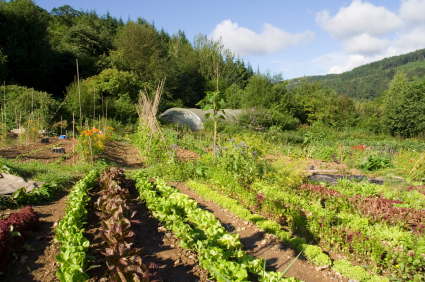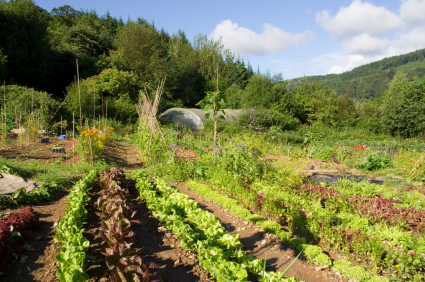 A proven climate solution. Not since Earl Butz’s famous “hedgerow to hedgerow” comment of the 1970s have America’s farmers been at such a turning point. Food and farming policy in the United States is largely determined by the Farm Bill, behemoth legislation that comes around once every five years. Yet, the current climate legislation–The American Clean Energy and Security Act (ACES)–offers an unprecedented opportunity to rethink the way America farms.
A proven climate solution. Not since Earl Butz’s famous “hedgerow to hedgerow” comment of the 1970s have America’s farmers been at such a turning point. Food and farming policy in the United States is largely determined by the Farm Bill, behemoth legislation that comes around once every five years. Yet, the current climate legislation–The American Clean Energy and Security Act (ACES)–offers an unprecedented opportunity to rethink the way America farms.
Since the start of ACES, agriculture interests have had an unspoken, yet powerful voice in the bill. Ag was explicitly exempted from the “capped” sector, which meanth that from the beginning, agriculture was always intended to receive offset benefits in ACES. But the question remains whether agricultural offsets will be awarded to the types of practices and systems that are scientifically proven to actually reduce greenhouse gas (GHG) emissions and sequester carbon.
With the bill now firmly in the grasp of Chairman Peterson of the House Agriculture Committee it will surely be riddled with agriculture handouts when it emerges. But while Peterson may attempt to load the bill, the quality–not the quantity–of such offsets will determine how effective the legislation is at reducing GHG emissions. Agricultural offsets and programs that fail to recognize the proven ability of organic practices and systems to reduce GHG emissions and sequester carbon will offer few real benefits for the climate, the environment, or a progressive farm future.
An increasing amount of peer-reviewed science demonstrates the true ability of organic practices and systems to not only sequester more carbon than conventional and no-till agriculture (yes, even no-till, the industry’s exalted climate change solution), but to inherently produce fewer GHG emissions overall. This is a point I can’t emphasize enough-climate legislation can not simply hope to sequester its way out of a looming environmental crisis. Unless ACES makes actual and verified reductions in GHG emissions it will be ineffective. And the best agricultural solution that has the science to back up such reductions is organic agriculture, with agroecological practices including abstaining from synthetic fertilizer and pesticide use, cover cropping, pasture-based animal production, incorporation of compost and manures into soils, and prevention of fallow fields.
So what does the science say? The United Nations Food and Agriculture Organization concluded “[w]ith lower energy inputs, organic systems contribute less to GHG emissions and have a greater potential to sequester carbon in biomass than conventional systems.” Research published by Pelletier et al. last year in Environmental Management found that organic cropping systems required half the fossil fuel inputs and generated three-fourths the GHG emissions of conventional agriculture. Additional studies shared similar results, largely because organic agriculture abstains from using synthetic fertilizers and pesticides, which require vast quantities of fossil fuels to produce. If we are really aiming for “energy independence” why aren’t we directing our farm policies to organic practices?
Still more scientific studies are finding that organic pasture raised animals offer a variety of climate benefits. The United Nations estimates that animal production contributes nearly one fifth of all global GHG emissions, making it not only a significant source of emissions but a significant opportunity for reductions and mitigation. Research by Flessa et. al. (2002) published in Agriculture, Ecosystems and Environment suggested that transitioning to pasture agriculture is the single best way to cut GHG emissions in animal production. Additional studies (Boadi et.al., 2004 and DeRamus et. al., 2003) determined that feeding livestock on pasture compared to feedlot diets usually consisting of corn and soy reduced methane emissions about 20%.
The EPA has also determined that when manures are stored or treated in liquid storage systems commonly found on factory farms, the decomposition of manure produces great amounts of methane, unlike when manure is handled as a solid or deposited on pasture, range or paddock lands. Manures spread appropriately on pastures and paddocks produce minimal amounts of methane. Research has also documented that manure stores on conventional farms emitted about twenty-five percent more methane gas than organic farms.
So that’s the first part- inherently fewer emissions because of the way that organic agriculture abstains from chemicals and synthetic ingredients and utilizes natural amendments which help store carbon. This leads me to my next point- sequestration. It’s true that all agriculture can sequester carbon, but if it’s doing so while simultaneously being doused in chemical fertilizers and pesticides the benefits are quickly lost. The new current trend promoted by the agricultural industry is no-till or conservation agriculture, which leaves crop residues on the surface and cuts down on tilling the soil. The supposed perks of no-till include increased sequestration, but recent evidence suggests otherwise.
The dirty little secret of no-till agriculture is that it increases pesticide use and also appears to increase emissions of nitrous oxide–310 times as strong as carbon dioxide. In fact, the USDA acknowledged last year, “By eliminating some or all of the tillage practices under conservation tillage, growers may rely more heavily on the use of herbicides for weed control.” Additional studies have concluded the same. And, increasing research suggests that under a variety of soil and climate conditions no-till agriculture actually increases nitrous oxide emissions. This is coupled with numerous studies including Baker et.al in 2007 that suggest no-till actually doesn’t sequester more carbon than conventional systems.
Recently though, USDA scientists concluded a nine year study comparing organic, conventional and no-till agriculture for sequestration and found the organic production system sequestered more carbon. Scientists noted, “Despite the use of tillage, soil combustible carbon and nitrogen concentrations were higher at all depth intervals to 30cm in organic agriculture compared with that in all other systems.” Further, the scientists concluded that, “these results suggest that organic agriculture can provide greater long-term soil benefits than conventional no-till, despite the use of tillage in organic agriculture.”
Thursday the House Agriculture Committee holds a hearing to review ACES, providing a key opportunity to recognize and act on the science behind the benefit of organic agriculture for climate change. Yet, the current panel line-up does not seem promising- representatives include the American Farm Bureau, the National Association of Corn Growers, National Milk Producers Federation, and even The Fertilizer Institute. Where are the NGOs? Where are the representatives for small family farm producers? Where are the organic farmers?
Progressive climate change legislation is no longer progressive when it perpetuates and rewards industrial agriculture that has been the main source of agricultural emissions for decades. Failure to include organic practices and certified organic producers in ACES will set back our goal of reducing GHGs in the present and prevent America’s farmers from economically transitioning to ecological farming. It’s not too late for the House Agriculture Committee and Chairman Peterson to realize this and set us on future farming course that not only feeds our country but cleans up the planet too.



